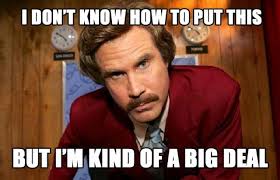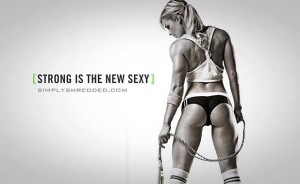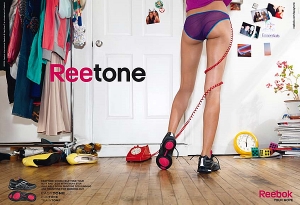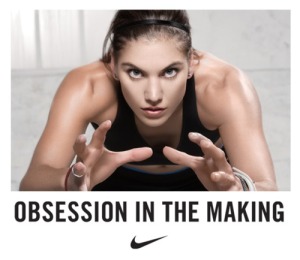A recent article in the Daily Mail caught my eye. I’m not on the Twitter, so I didn’t see any of it first hand, but 15th seeded French tennis player Marion Bartoli, who won June 6th’s Wimbledon final, was trolled like crazy on Twitter after winning the championship.

The trolls made fun of her looks, calling her ‘ugly, ‘manly’, and ‘a fat slob’. You can read all of the nasty details here.
First, that it’s a shame that I was able to find more coverage of the internet trolling of Bartoli than details of her win. Second, that I’m pretty sure this sort of thing wouldn’t happen in men’s sports. Which got me thinking, how much of a role does sex appeal play in women’s sports? It also got me thinking about how sex appeal sells fitness, but I’ll cover that in another post.
Let’s look again at tennis, where Wimbledon officials (in the 2009 tournament) admitted that they take physical attractiveness into consideration when assigning courts. Anna Kournikova, once ranked 19th in world, routinely makes more sponsorship money than much higher ranked players, including the Williams sisters. She starred in a music video with Enrique Iglesias. She does countless magazine covers. Nora Lanktree, of Lanktree Sports Celebrity Network, who matches endorsers and athletes says it’s a matter of economics – ”For an advertiser, the most important element is visibility,” Ms. Lanktree said. ”And in sports, women are just not as visible.” Female athletes who get that visibility are less often the ones with great accomplishments, and more often the ones who are easiest on the eyes.
Even golf, which has not traditionally been a sport centering on sex appeal, has parameters about the appearance of their players, said LPGA commissioner Ty Votaw, “The very number one point … is performance. Everything else follows from that. But, you have to also find ways in which you make yourself relevant to our fan base, play the game and represent the sport with joy and passion, be mindful of your appearance and also be approachable so the fans want that autograph and that interaction with you.”
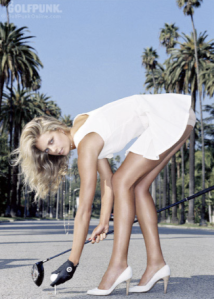
LPGA golfer, Anna Rawson
Millions of viewers tune in to the Legends Cup (formerly the Lingerie Bowl), while WNBA games can barely attract 250,000 viewers per game.
Women’s beach volleyball (with ALL the bikinis) was one of the London Olympics’ hottest tickets.
Sexist? Sure.
A detriment to women’s sporting culture? Well, let’s take a closer look at that.
One empirical study out of the University of Minnesota looked at whether or not sex really does sell women’s sports. Mary Jo Kane and a colleague showed a variety of age and gender specific focus groups photos of female athletes ranging from “on-court athletic competence to wholesome “girls next door” to soft pornography” They then asked the participants to rate their interest in watching, reading about, or attending the sport in question. According to the results of the study, the sexualized images alienated women and older men, and offended some of the viewers. They noted that while the prime viewers of sports, younger men, found the provocative images “hot”, they would not be more likely to attend an event based on them. The studies claim: Sex sells sex, not women’s sports.
Hm. Maybe.
Another point – Many marketing campaigns for women’s sports (the ones that don’t rely on sex) focus on family values, and the wholesome nature of sport. They appeal to all generations, often highlighting father-daughter connections. If that’s the image we’re selling, sex appeal might not be the most complimentary bedfellow.
That being said, I don’t think this issue is as black and white as Mary Jo Kane’s study would have us believe.
To deny that sex appeal is a part of women’s sports is to deny what I believe to be a pretty obvious truth. Men are the major consumers of mainstream sports (don’t get all up in arms, I didn’t say only, I said major). Men are visual creatures. Men like action, they like aggression, and a good number of them can appreciate a fine-looking lady.
Does complaining about how sexist that is help to bring more fans to women’s sports? Not a chance.
Too often we make the mistake of assuming that using sex to sell women’s sports is all bad. That it’s an just insidious mindset that makes female athletes into objects, and downplays their real athletic abilities. That by relying on sex appeal to get asses in seats, we we give up any claim to sporting prowess.
I call bullshit.
Sure, it might set your teeth on edge, but women’s sports do have something to gain by not denying or railing against the incorporation of the feminine and the athletic.
The primary image we hold of sports is traditionally male (hockey and women’s hockey, basketball and women’s basketball, etc.). Since Title Nine in the States, girls have become more and more active in sports, operating under the existing structure of high-school and college competition – a structure that used to be for the boys. This means more and more male coaches, and a “hyper-masculine” approach to training and achievement. To get noticed, girls have to push themselves even harder than boys of comparable skill. If you want to read more about the benefits and pitfalls, I highly suggest Warrior Girls, a great book about girls, sports, and the culture of injury that’s been built up.
Generally, women who play sports and play them well don’t fit into the box that we use to define femininity or the one we use to define athleticism.
Katy Kelleher, of Jezebel, puts it this way:
Female athletes seem to serve as a never-ending well of material for those obsessed with both the female body and the importance of femininity. There seems to be a real difficulty marketing athletic women to the general public without resorting to these tricks, which continually reiterate that this is about a woman in sports, a female athlete, someone with two X chromosomes. In a way it makes sense that a physical career would lead to coverage that is so heavily centered on the body, but the emphasis on womanly-ness and athleticism undercuts the fact that many women are naturally athletic, that it is not impossible to be both.
Also in Jezebel, Margaret Hartman writes,
At the core of (the) stereotypes is the idea that athleticism is inherently masculine. While women’s sports are supposed to be about greater equality and empowerment, female athletes are still expected to strike a balance between being too sexy and not attractive enough. Unfortunately, until Serena Williams grunting on the court and wearing a dress and pearls during an interview are seen as equally feminine, there won’t be a level playing field for women in sports.
Again, derby, solver of all of the problems of traditional sports culture, I look to you.
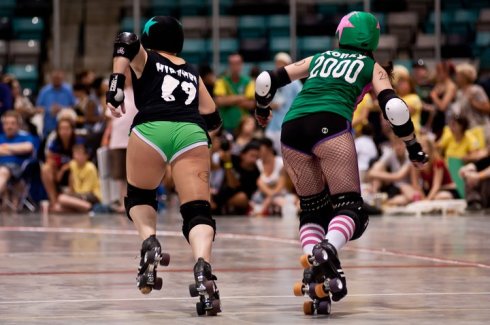
Powerful AND Sexy.
Photo courtesy Joe Mac
Roller derby holds a somewhat unique place in sports because it is defined by its female-played incarnation. It’s roller derby and men’s roller derby, as opposed to hockey and women’s hockey, basketball and women’s basketball, golf and ladies golf, and so on. We can define exactly the image of the sport that we want to send out to the public. And, in my opinion, I think it’s best that image be both powerful and feminine. Both athletic and sexy. Roller derby is many things to many people – from the little girls wanting to be just like their skating idols, to the frat boys wanting to see hot chicks beat on each other, to the die-hard fans tracking the stats. If we play our image card right, we can appeal to all of these people, and change (in our own small way) the way that female athletes are marketed.
The key is to make strength, power, and athletic competition appear sexy, not to sex-up the strong, powerful athletes in a context outside of their sport. I appreciate ESPN’s annual bodies issue, but I get all up-in-arms when the athlete’s photos have nothing to do with what they do for a living. When Suzy Hotrod was photographed, she was wearing her skates. They’ll often have basketball players dunking, or runners in the starting blocks – fantastic. Just lounging around like you’re on the cover of Playboy (or Playgirl as the case may be) – not as fantastic. The photos that are the most captivating are the ones that show the athletes doing what they do best.
I guess the core of what I’m saying is that too often the pendulum is way to far in either direction when it comes to selling sex and women’s sports – they’re not antithetical. The sex is there – but it doesn’t need to be the reason you start, the reason you stay, or the reason that drives you way deep in your soul. Market the sport, market the action, market the power and the pull of strong bodies. As female athletes (and marketers of roller derby), we should accept that we can be feminine and athletic. Some examples from other sports:

“The Olympics is a platform to show we’re real athletes, …Walking out there in a bikini, trust me, I don’t feel sexy. I am mean. I am tough.” (US beach volleyball player & silver medalist, Jen Kessy)
“We don’t apologize for …the marketability of our players off the court, they’re attractive. They’re fit. They’re recognized as great athletes, which they are — some of the greatest athletes in the world.” (Women’s Tennis Organization CEO Kevin Wulff)
“It’s really wonderful to be feminine, I mean, why do you have to hide your femininity to be a professional athlete?” (Jan Stevenson, Senior Tour player)
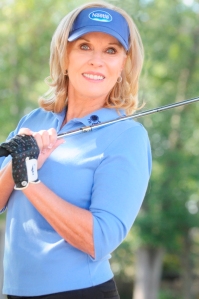
Ms. Stevenson goes on to say, “They may go watch the other cute girls, but when, when it comes down the stretch, they’re going to be watching winners.”
Let’s aim for a more encompassing definition of what it is to be a female athlete, and embrace all of the aspects of who we are and what we offer to the sporting world. Let’s be strong, be agile, be whatever shape, size, and composition we are, let’s be fierce competitors, and world-class athletes.
And let’s not forget that being all of those things is pretty darn sexy.
Tags: LPGA, sex appeal, sports marketing, women's beach volleyball, women's sports, women's tennis

